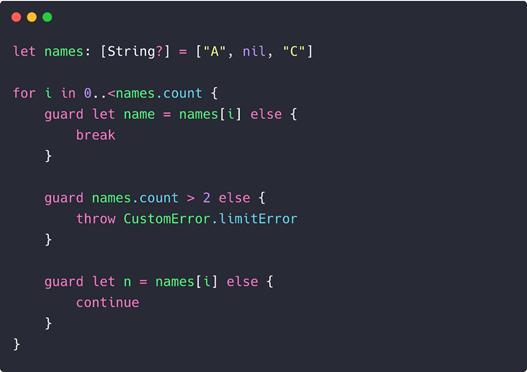2024年2月6日发(作者:)

# nl : Dutch ru : Russian# ar_EG: Egyptian zh_CN: Simplified Chinese# en_GB: English (Great Britain) sk : Slovak# et : Estonian sl : Slovenian# fi : Finnish es_ES: Spanish# de : German sv : Swedish# el : Greek th : Thai# iw : Hebrew zh_TW: Traditional Chinese# hu : Hungarian tr : Turkish# is : Icelandic uk : Ukrainian# in : Indonesian vi : Vietnamese# it : Italian## Example : SELECTED_LANGUAGES=en,fr,ja#------------------------------------------------------------------------------SELECTED_LANGUAGES=en,zh_CN#------------------------------------------------------------------------------# Specify the complete path of the Oracle Home.#------------------------------------------------------------------------------ORACLE_HOME=/orahome/app/oracle/product/11.2.0/dbhome_1#------------------------------------------------------------------------------# Specify the complete path of the Oracle Base.#------------------------------------------------------------------------------ORACLE_BASE=/orahome/app/oracle#------------------------------------------------------------------------------# Specify the installation edition of the component.## The value should contain only one of these choices.# EE : Enterprise Edition# SE : Standard Edition# SEONE : Standard Edition One# PE : Personal Edition (WINDOWS ONLY)#------------------------------------------------------------------------------lEdition=EE#------------------------------------------------------------------------------# This variable is used to enable or disable custom install.## true : Components mentioned as part of 'customComponents' property# are considered for install.# false : Value for 'customComponents' is not considered.#------------------------------------------------------------------------------omInstall=false#------------------------------------------------------------------------------# This variable is considered only if 'IsCustomInstall' is set to true.## Description: List of Enterprise Edition Options you would like to install.## The following choices are available. You may specify any# combination of these choices. The components you choose should# be specified in the form "internal-component-name:version"# Below is a list of components you may specify to install.## ioning:11.2.0.1.0 - Oracle Partitioning# :11.2.0.1.0 - Oracle Data Mining# :11.2.0.1.0 - Oracle Database Vault# :11.2.0.1.0 - Oracle Label Security# :11.2.0.1.0 - Oracle Real Application Testing# p:11.2.0.1.0 - Oracle OLAP#------------------------------------------------------------------------------Components=:11.2.0.1.0,:10.2.7.0.0,:11.2.0.1.0,:11.2.0.1.0,
k:11.2.0.1.0,er:11.2.0.1.0,:11.2.0.1.0,s:11.2.0.1.0,ioning:11.2.0.1.0,p:11.2.0.1.0,:11.2.0.1.0,:11.2.0.1.0,:11.2.0.1.0,:11.2.0.1.0################################################################################ ## PRIVILEGED OPERATING SYSTEM GROUPS ## ------------------------------------------ ## Provide values for the OS groups to which OSDBA and OSOPER privileges ## needs to be granted. If the install is being performed as a member of the ## group "dba", then that will be used unless specified otherwise below. ## #################################################################################------------------------------------------------------------------------------# The DBA_GROUP is the OS group which is to be granted OSDBA privileges.#------------------------------------------------------------------------------_GROUP=dba#------------------------------------------------------------------------------# The OPER_GROUP is the OS group which is to be granted OSOPER privileges.#------------------------------------------------------------------------------_GROUP=oinstall#------------------------------------------------------------------------------# Specify the cluster node names selected during the installation.#------------------------------------------------------------------------------R_NODES=#------------------------------------------------------------------------------# Specify the type of database to create.# It can be one of the following:# - GENERAL_PURPOSE/TRANSACTION_PROCESSING# - DATA_WAREHOUSE#------------------------------------------------------------------------------=GENERAL_PURPOSE#------------------------------------------------------------------------------# Specify the Starter Database Global Database Name.#------------------------------------------------------------------------------DBName=orcl#------------------------------------------------------------------------------# Specify the Starter Database SID.#------------------------------------------------------------------------------=orcl#------------------------------------------------------------------------------# Specify the Starter Database character set.## It can be one of the following:# AL32UTF8, WE8ISO8859P15, WE8MSWIN1252, EE8ISO8859P2,# EE8MSWIN1250, NE8ISO8859P10, NEE8ISO8859P4, BLT8MSWIN1257,# BLT8ISO8859P13, CL8ISO8859P5, CL8MSWIN1251, AR8ISO8859P6,# AR8MSWIN1256, EL8ISO8859P7, EL8MSWIN1253, IW8ISO8859P8,# IW8MSWIN1255, JA16EUC, JA16EUCTILDE, JA16SJIS, JA16SJISTILDE,# KO16MSWIN949, ZHS16GBK, TH8TISASCII, ZHT32EUC, ZHT16MSWIN950,# ZHT16HKSCS, WE8ISO8859P9, TR8MSWIN1254, VN8MSWIN1258#------------------------------------------------------------------------------terSet=AL32UTF8#------------------------------------------------------------------------------# This variable should be set to true if Automatic Memory Management# in Database is desired.# If Automatic Memory Management is not desired, and memory allocation
# is to be done manually, then set it to false.#------------------------------------------------------------------------------Option=true#------------------------------------------------------------------------------# Specify the total memory allocation for the database. Value(in MB) should be# at least 256 MB, and should not exceed the total physical memory available# on the system.# Example: Limit=512#------------------------------------------------------------------------------Limit=#------------------------------------------------------------------------------# This variable controls whether to load Example Schemas onto the starter# database or not.#------------------------------------------------------------------------------lExampleSchemas=false#------------------------------------------------------------------------------# This variable includes enabling audit settings, configuring password profiles# and revoking some grants to public. These settings are provided by default.# These settings may also be disabled.#------------------------------------------------------------------------------SecuritySettings=true################################################################################ ## Passwords can be supplied for the following four schemas in the ## starter database: ## SYS ## SYSTEM ## SYSMAN (used by Enterprise Manager) ## DBSNMP (used by Enterprise Manager) ## ## Same password can be used for all accounts (not recommended) ## or different passwords for each account can be provided (recommended) ## #################################################################################------------------------------------------------------------------------------# This variable holds the password that is to be used for all schemas in the# starter database.#-------------------------------------------------------------------------------=oracle#-------------------------------------------------------------------------------# Specify the SYS password for the starter database.#-------------------------------------------------------------------------------=#-------------------------------------------------------------------------------# Specify the SYSTEM password for the starter database.#-------------------------------------------------------------------------------=#-------------------------------------------------------------------------------# Specify the SYSMAN password for the starter database.#-------------------------------------------------------------------------------=#-------------------------------------------------------------------------------# Specify the DBSNMP password for the starter database.#-------------------------------------------------------------------------------=
#-------------------------------------------------------------------------------# Specify the management option to be selected for the starter database.# It can be one of the following:# 1. GRID_CONTROL# 2. DB_CONTROL#-------------------------------------------------------------------------------l=DB_CONTROL#-------------------------------------------------------------------------------# Specify the Management Service to use if Grid Control is selected to manage# the database.#-------------------------------------------------------------------------------ntrolServiceURL=#-------------------------------------------------------------------------------# This variable indicates whether to receive email notification for critical# alerts when using DB control.#-------------------------------------------------------------------------------EmailNotification=false#-------------------------------------------------------------------------------# Specify the email address to which the notifications are to be sent.#-------------------------------------------------------------------------------ddress=#-------------------------------------------------------------------------------# Specify the SMTP server used for email notifications.#-------------------------------------------------------------------------------rver=################################################################################ ## SPECIFY BACKUP AND RECOVERY OPTIONS ## ------------------------------------ ## Out-of-box backup and recovery options for the database can be mentioned ## using the entries below. ## #################################################################################------------------------------------------------------------------------------# This variable is to be set to false if automated backup is not required. Else# this can be set to true.#------------------------------------------------------------------------------=false#------------------------------------------------------------------------------# Regardless of the type of storage that is chosen for backup and recovery, if# automated backups are enabled, a job will be scheduled to run daily at# 2:00 AM to backup the database. This job will run as the operating system# user that is specified in this variable.#------------------------------------------------------------------------------=#-------------------------------------------------------------------------------# Regardless of the type of storage that is chosen for backup and recovery, if# automated backups are enabled, a job will be scheduled to run daily at# 2:00 AM to backup the database. This job will run as the operating system user# specified by the above entry. The following entry stores the password for the# above operating system user.#-------------------------------------------------------------------------------=#-------------------------------------------------------------------------------# Specify the type of storage to use for the database.# It can be one of the following:
# It can be one of the following:# - FILE_SYSTEM_STORAGE# - ASM_STORAGE#------------------------------------------------------------------------------eType=FILE_SYSTEM_STORAGE#-------------------------------------------------------------------------------# Specify the database file location which is a directory for datafiles, control# files, redo logs.## Applicable only when e=FILE_SYSTEM#-------------------------------------------------------------------------------cation=/orahome/data#-------------------------------------------------------------------------------# Specify the backup and recovery location.## Applicable only when e=FILE_SYSTEM#-------------------------------------------------------------------------------ryLocation=#-------------------------------------------------------------------------------# Specify the existing ASM disk groups to be used for storage.## Applicable only when e=ASM#-------------------------------------------------------------------------------oup=#-------------------------------------------------------------------------------# Specify the password for ASMSNMP user of the ASM instance.## Applicable only when e=ASM_SYSTEM#-------------------------------------------------------------------------------PPassword=#------------------------------------------------------------------------------# Specify the My Oracle Support Account Username.## Example : MYORACLESUPPORT_USERNAME=metalink#------------------------------------------------------------------------------MYORACLESUPPORT_USERNAME=#------------------------------------------------------------------------------# Specify the My Oracle Support Account Username password.## Example : MYORACLESUPPORT_PASSWORD=password#------------------------------------------------------------------------------MYORACLESUPPORT_PASSWORD=#------------------------------------------------------------------------------# Specify whether to enable the user to set the password for# My Oracle Support credentials. The value can be either true or false.# If left blank it will be assumed to be false.## Example : SECURITY_UPDATES_VIA_MYORACLESUPPORT=true#------------------------------------------------------------------------------SECURITY_UPDATES_VIA_MYORACLESUPPORT=false#------------------------------------------------------------------------------# Specify whether user wants to give any proxy details for connection.# The value can be either true or false. If left blank it will be assumed# to be false.## Example : DECLINE_SECURITY_UPDATES=false#------------------------------------------------------------------------------DECLINE_SECURITY_UPDATES=true

本文发布于:2024-02-06 22:17:54,感谢您对本站的认可!
本文链接:https://www.4u4v.net/it/170722907462601.html
版权声明:本站内容均来自互联网,仅供演示用,请勿用于商业和其他非法用途。如果侵犯了您的权益请与我们联系,我们将在24小时内删除。
| 留言与评论(共有 0 条评论) |